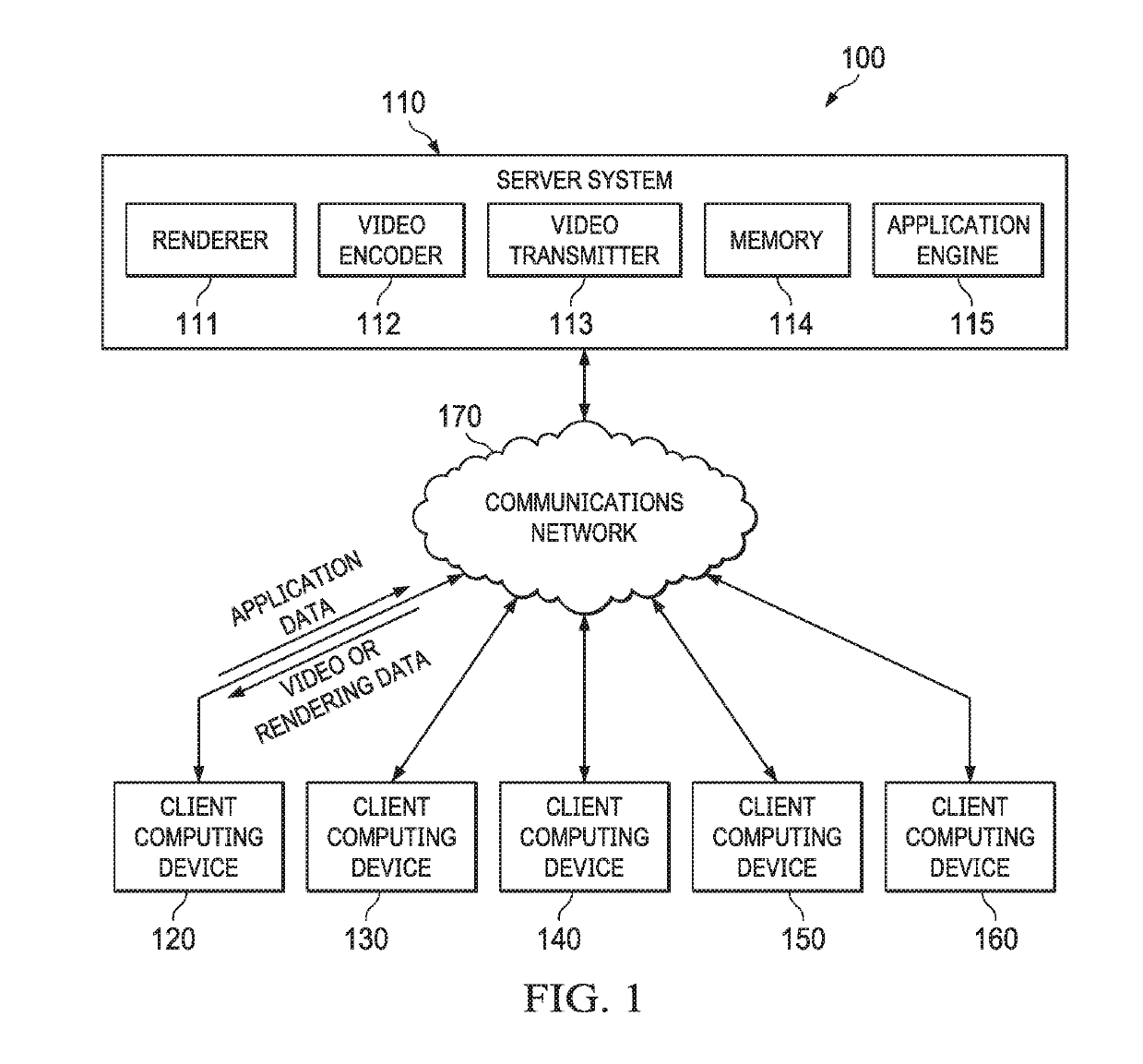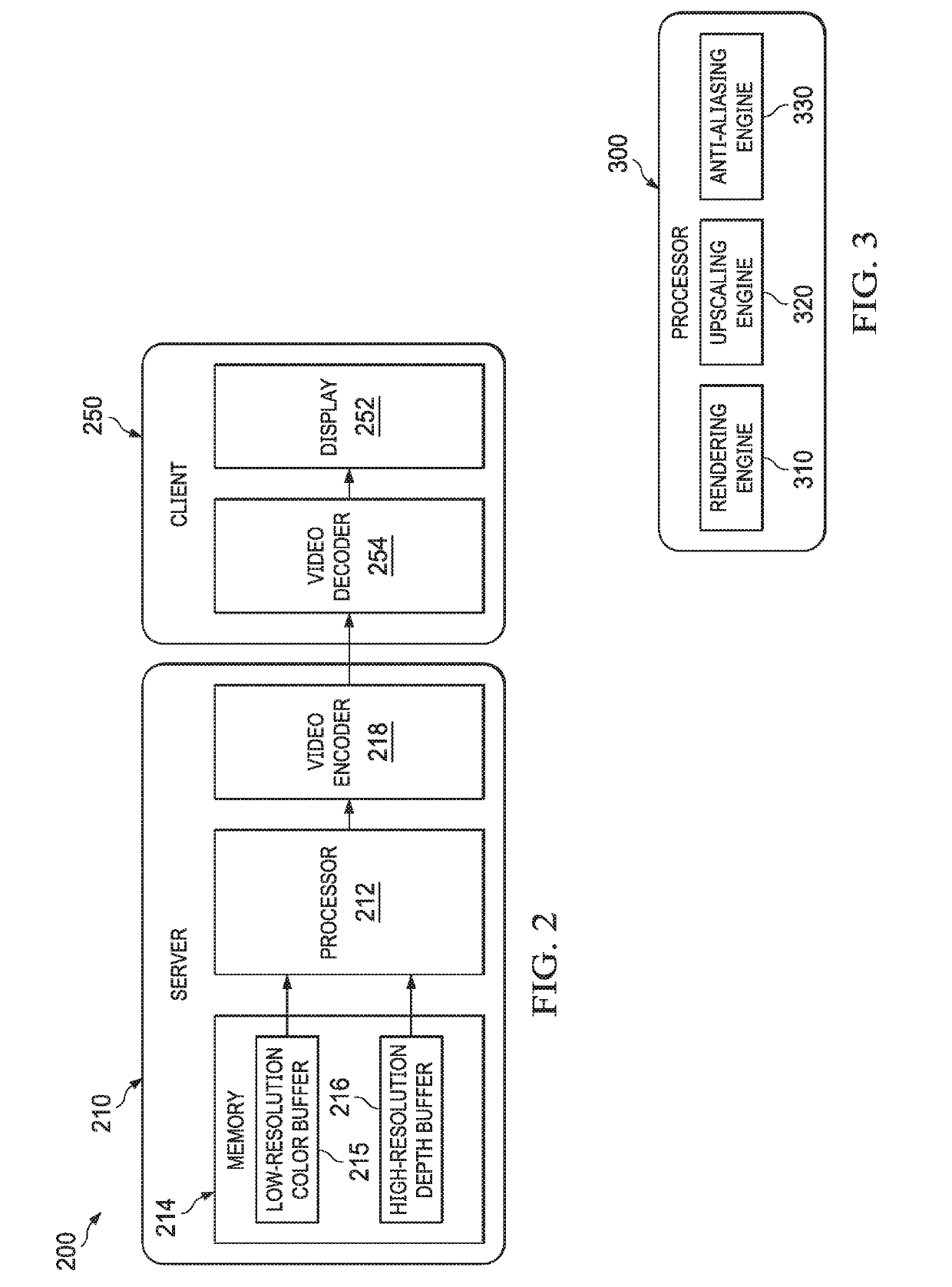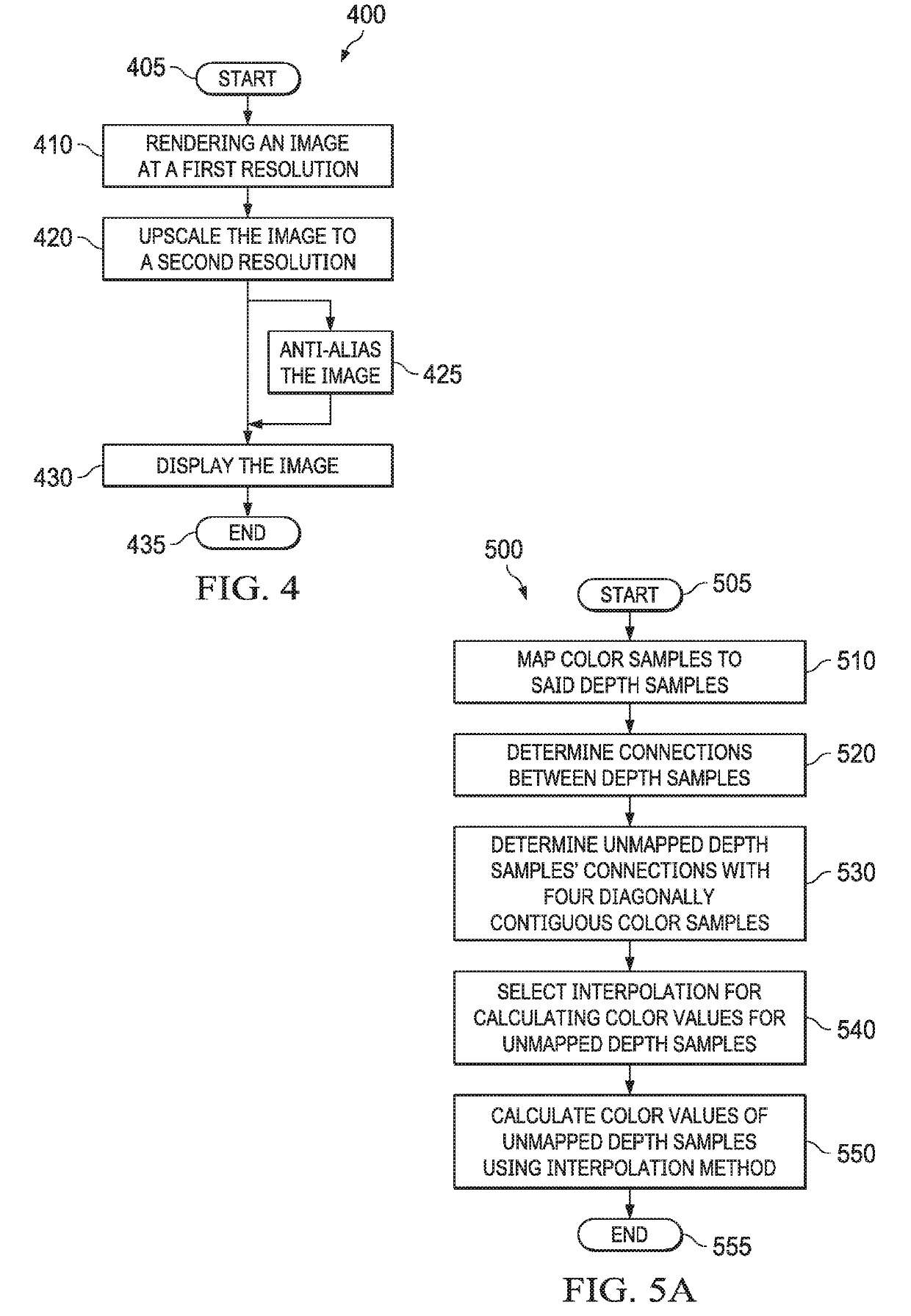Adaptive upscaling of cloud rendered graphics
a cloud rendering and video upscaling technology, applied in the field of video upscaling and rendering process, can solve the problems of affecting the response and execution speed of the application, affecting the performance of the application, so as to achieve the effect of increasing the density of the virtual machin
- Summary
- Abstract
- Description
- Claims
- Application Information
AI Technical Summary
Benefits of technology
Problems solved by technology
Method used
Image
Examples
Embodiment Construction
[0034]Rendering can be a resource intensive process that uses multiple passes to convert data into a format capable of being displayed on a display device. The rendering process can take into account various embodiments, variations, and scene parameters, such as determining if one object blocks another and to account for lighting and shading of a scene, to compute the color values for the pixels that will be displayed in each frame. The rendering process can be initially executed on a server system or set of server systems (server systems), such as a cloud-based renderer or a data center environment.
[0035]Real-time rendering can be used to render images or frames that are then encoded to form a video that can be delivered to client computing devices for display to one or more users. The video utilizes bandwidth and the amount of data in the video directly drives the time it takes to complete the transmission of the video to the client computing device.
[0036]Reducing the amount of co...
PUM
 Login to View More
Login to View More Abstract
Description
Claims
Application Information
 Login to View More
Login to View More - R&D
- Intellectual Property
- Life Sciences
- Materials
- Tech Scout
- Unparalleled Data Quality
- Higher Quality Content
- 60% Fewer Hallucinations
Browse by: Latest US Patents, China's latest patents, Technical Efficacy Thesaurus, Application Domain, Technology Topic, Popular Technical Reports.
© 2025 PatSnap. All rights reserved.Legal|Privacy policy|Modern Slavery Act Transparency Statement|Sitemap|About US| Contact US: help@patsnap.com



